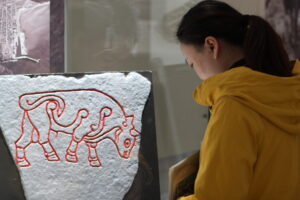Report reveals museums and galleries’ finances more fragile than ever

A detailed report analysing a survey from this summer of Scotland’s museums and galleries sector tells a tale of two halves – visitor numbers are up overall; however, the finances of the sector are more fragile than ever.
The full findings reveal how museums and galleries are faring on a range of issues, including staffing levels, reserves, income, expenditure, volunteers, visitor type, climate, social impact, and education.
It also shows that the sector is delivering against strategic priorities.
The report is based on 114 organisational submissions, equating to a 39% response rate. We can compare this summer’s findings with a similar survey carried out in 2022.
Notable results include:
- Despite high inflation, most organisations report no change to their income. This means it is likely that most have faced a real terms decrease.
- In terms of recent changes to total expenditure levels, almost two-thirds of respondents reported that they have seen an increase. This means we have a sector that has lost income but faced increased outgoings.
- The proportion of museum organisations reporting more than 12 months reserves has fallen from 43% to 36%, while the proportion reporting reserves of less than 4 months has risen from 24% to 28%.
- 11% of respondents report that they feel their organisation is at risk of closure in the next 12 months. In 2022 it was 10%.
- Progress has been made around fundraising strategies, with 63% reporting that they do have a fundraising plan/strategy for their museum, compared to 42% in 2022.
- There has been a shift in roles, with front of house roles remaining the highest proportion, up from 34% to 41%, while curatorial roles have fallen from 10% to 8%. Education, learning and participation roles, which deliver vital audience engagement, are down to just 4% of the museum workforce. This means we are losing the ability to care for and share the stories of the collections we hold for the people of Scotland.
- Visits to museums numbered 15.4 million, higher than the 5.2 million reported in 2021-22 and higher than the 12.8 million reported in the pre-Covid period of 2019-20.
- There has also been a shift in types of visitors, with a drop in local visitors (21%, down from 28%) and a rise in international visitors (42%, up from 34%).
- Encouragingly, 64% of organisations report that they actively engage with the health and wellbeing agenda, the same proportion as in 2022.
Lucy Casot, CEO at Museums Galleries Scotland said:
“This report shows the state of Scotland’s museums and galleries, underlining their importance to our economy, our health and wellbeing and our education. Despite the increase in visitor numbers, we still have an extremely vulnerable sector.
Cost pressures and funding cuts mean our museums and galleries are looking less financially resilient, with a number at risk of closure. Such shutdowns would pose serious questions for the future of nationally important collections which are held around the country for the benefit of the people of Scotland. Closures also risk local cultural and visitor ecosystems, as the loss of one asset often has a knock-on effect throughout the community.
Museums and galleries are continuing to deliver the very best for local communities but without investment these positive impacts cannot be sustained. Most are at a disadvantage as they can’t access capital funding and are limited in access to grant funding. Strategic public funding at local and national level is urgently required to help the sector transform and ensure culture and heritage are accessible for everyone.”


